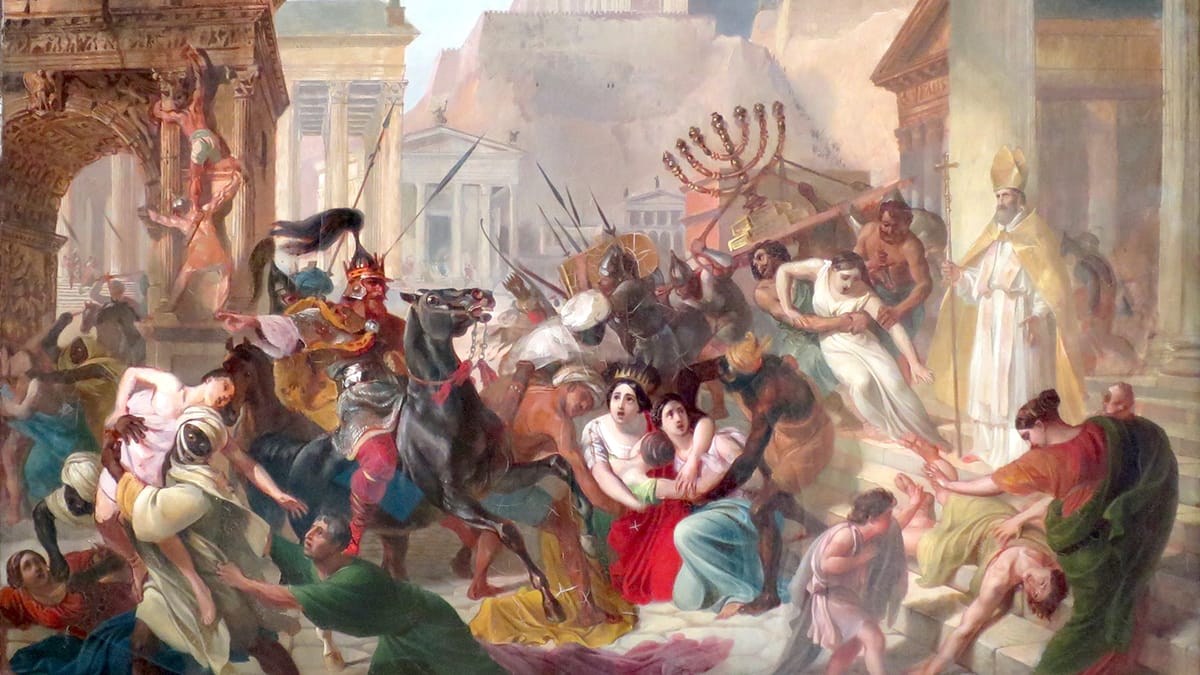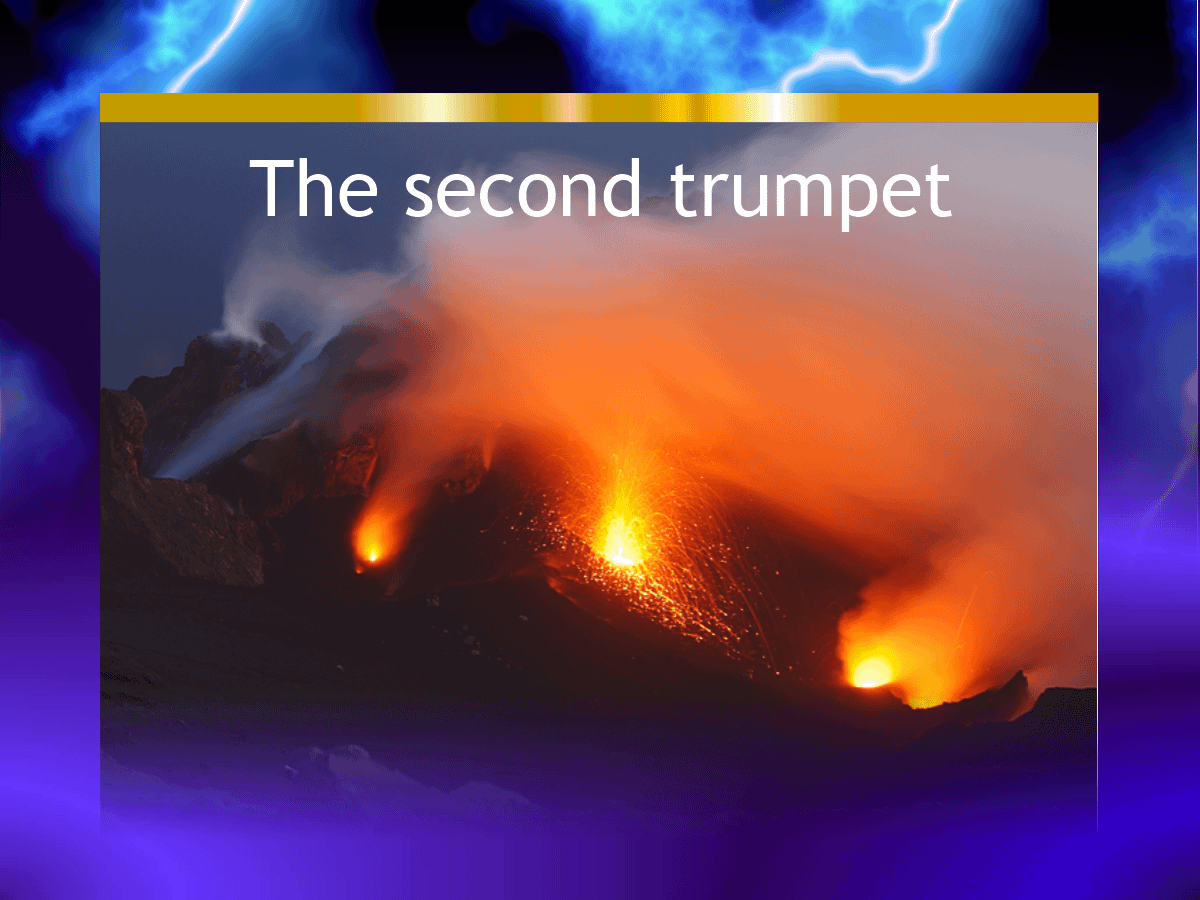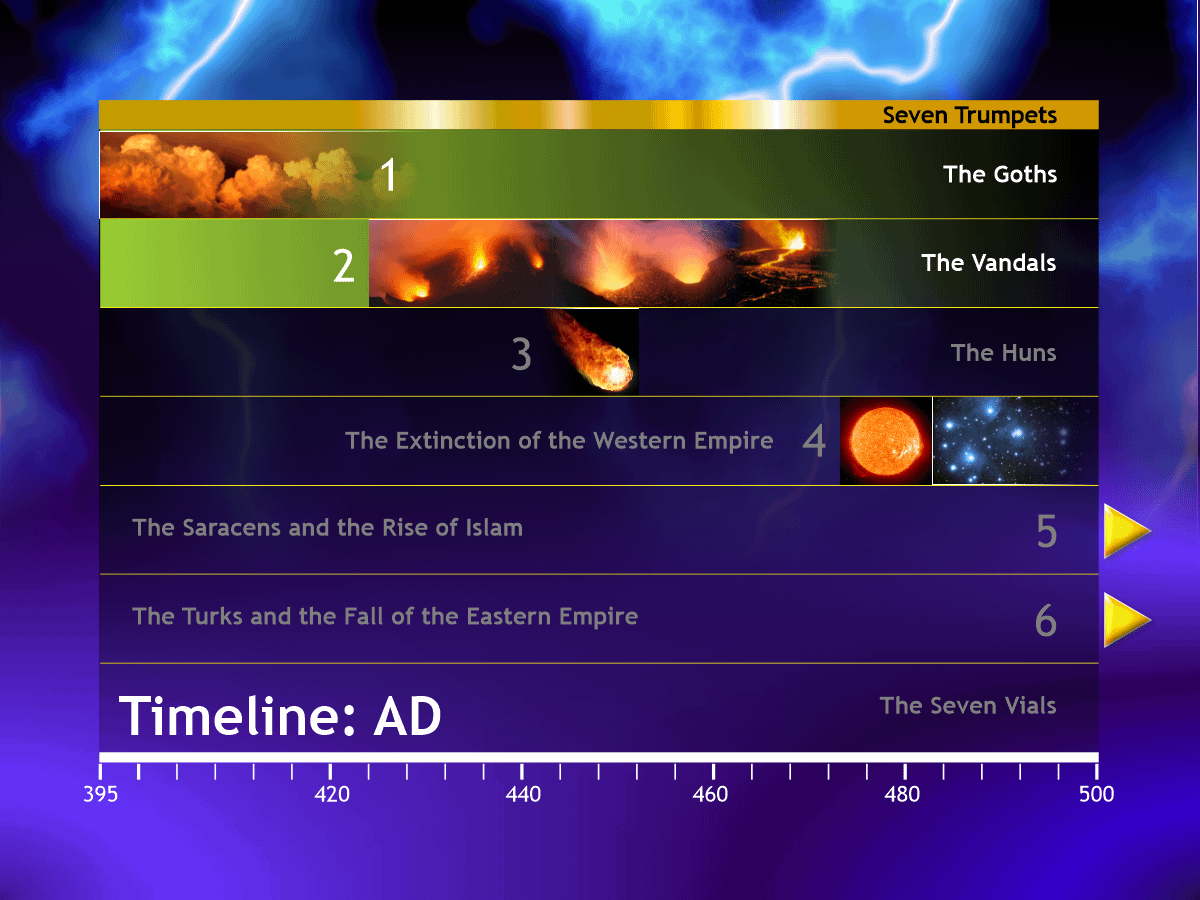Prophecy
Revelation
The Second Trumpet
Genseric and the Vandals
The burning mountain and the sea of blood
Circa AD 425 –
And the second angel sounded, and as it were a great mountain burning with fire was cast into the sea: and the third part of the sea became blood; And the third part of the creatures which were in the sea, and had life, died; and the third part of the ships were destroyed.
War comes to the Mediterranean Sea. The coasts, the islands, and the ships are ravaged by the second great wave of Barbarian invasions in the West – the Vandals under Genseric.
The second wave of invaders came as the Vandals, who had entered into Gaul (Spain), now broke out into Northern Africa, the breadbasket of the empire, and ravaged the Mediterranean Sea. The sea areas became the next great scene of bloodshed. In large naval battles the Vandals destroyed the fleets of the Romans and gained control of the coasts and islands. The Vandals again sack the city of Rome.
For more detail, read the extracts below…
The Visions of Daniel and the Revelation Explained
E.P. Cachemaille, c.1917A simple but comprehensive summary
Download the book
Daniel and the Revelation
Joseph Tanner, 1898Written as a comparison of the Historicist and Futurist interpretations
Download the book
Horae Apocalypticae
E.B. Elliot, 1862, Fifth EditionThe standard Historicist work – a detailed and thorough exposition in four volumes
Download the book

























